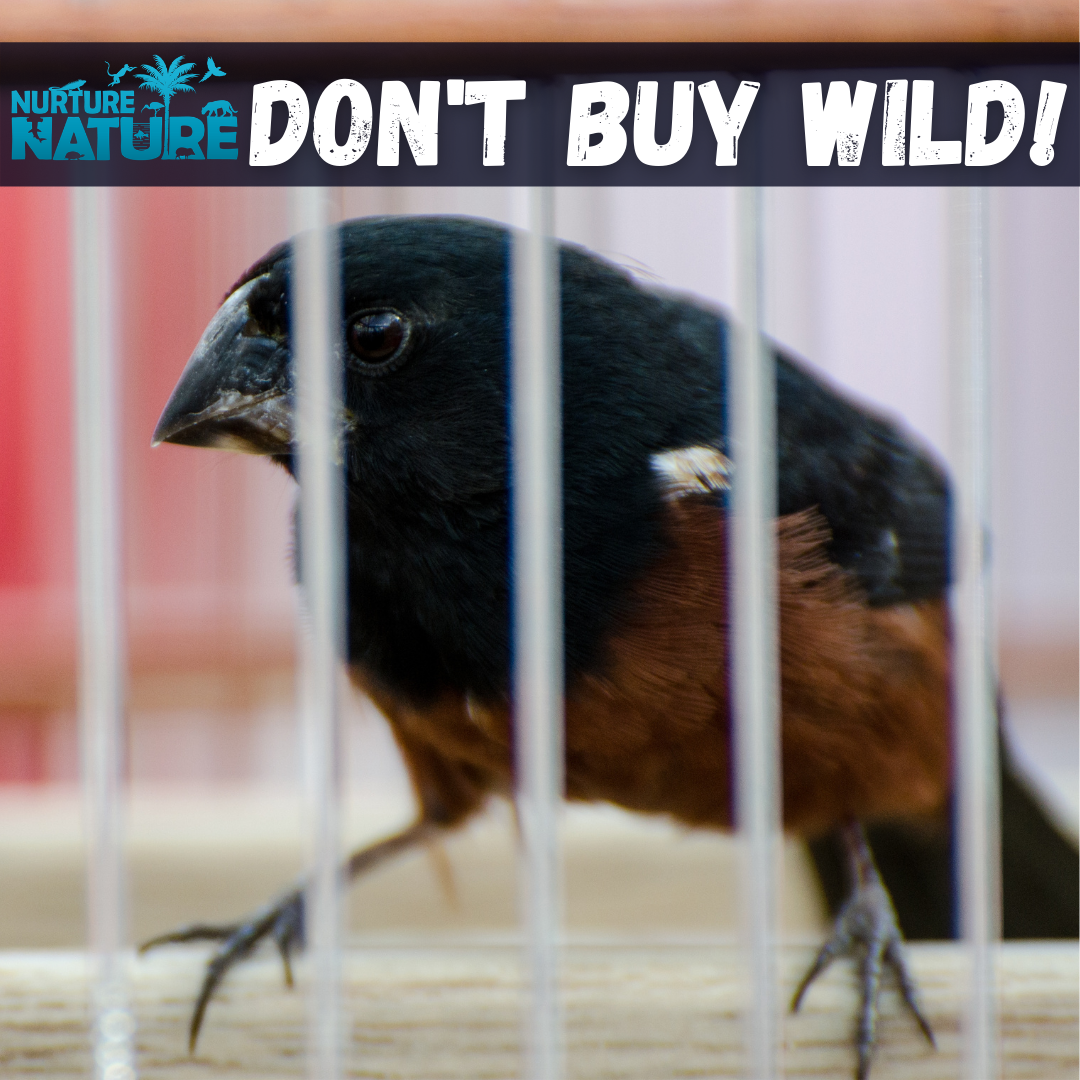Trade Insights: Bullfinch

I only live in cages now.
The Chestnut-bellied Seed Finch AKA “Bullfinch” (Sporophila angolensis) and other songbirds have disappeared from Trinidad and Tobago.
This disappearance had been predicted for many years. By 1973, ornithologists noted that habitat loss and “unchecked trapping of male finches...will undoubtedly result in the complete extinction in Trinidad within a decade or so of all these species...”
Songbird population declines can be partly explained by pesticide use and habitat loss. However, the dramatic decreases in most songbird species can be strongly linked to trapping, as other “less musical” seedeaters persist in the wild even today.
© Meshach Pierre
Traditionally, birds were caught using lime and traps. By the 80's huge numbers were being caught with mist nets. In 1984, the Trinidad and Tobago Field Naturalist’s Club published an article highlighting the plight of T&T’s songbirds and the fact that birds had begun to be smuggled in from Venezuela due to decreased local numbers. These birds came “[p]acked in cages by the hundreds, some expire at the bottom of the cages forming eventually a layer of two to three inches or more.”
Sadly, these inhumane conditions have not changed over time. Large numbers of juvenile Bullfinches are stolen from the forests of South America, trafficked into Trinidad, and then sold into a deathly songbird trade. The market for Bullfinches is driven by the desire for male birds and their singing prowess. Captive females, meanwhile, are typically released without any rehabilitation.
“They release the female and it does suffer. It does not know where to go to eat. You see a bird will come to [our birds’] cages for food. The bird will be dehydrated, in a state of shock.” - Disheartened Bullfinch Keeper
When the birds are juvenile, both males and females are an identical brown colour. Upon maturity, the males develop black plumage and the fate of the still-brown females is decided. The release of previously captive birds will likely lead to death, as they do not know how to cope in the wild after spending most of their life in a cage. Because of this, the songbird trade has a high mortality rate, with some interviewed traders estimating as many as 80% of traded bullfinches die.
“I honestly feel really bad now, I didn’t know. I really wish I had known it before and I didn’t do the research." - Remorseful Bullfinch Keeper in Trinidad and Tobago
Pervasive legal issues around the importation and sale of Bullfinches make it almost impossible for keepers to ethically source birds. Currently, most songbirds sold in T&T are trafficked in from South America. Although a premium price is placed on local Bullfinches, they are now extremely rare. It is virtually impossible to tell if the trafficked birds are of the same variant native to T&T.
Unfortunately, most first-time keepers have no understanding of the harms and legal risks until it’s too late and Bullfinches are often held in captivity without the required permits. Any person in possession of a Bullfinch without a permit during the closed season is liable to a fine of TTD $2,000.00 dollars under the Conservation of Wild Life Act (CoWLA). An effective regulatory system is essential to protect songbirds. An ideal scenario for T&T would include enforcement of trapping restrictions and a captive breeding/propagation programme that meets high international standards.




